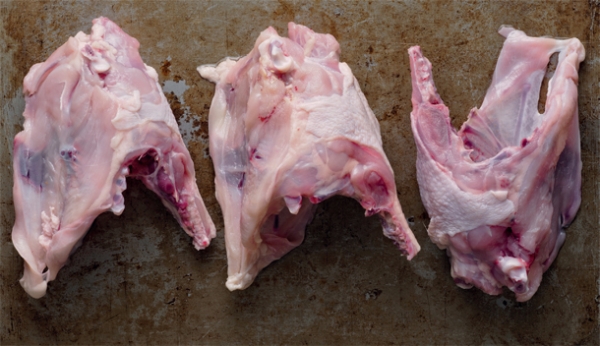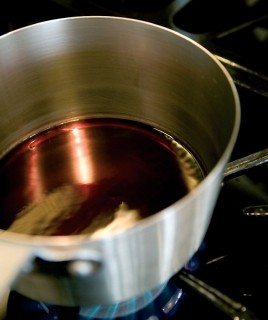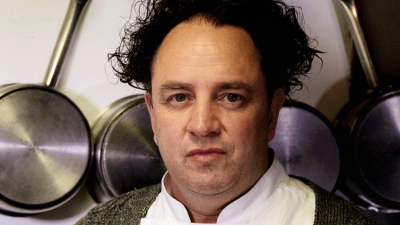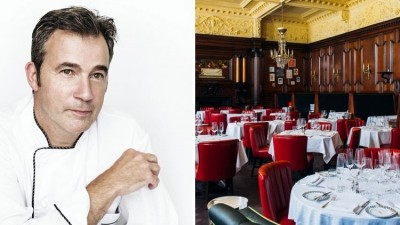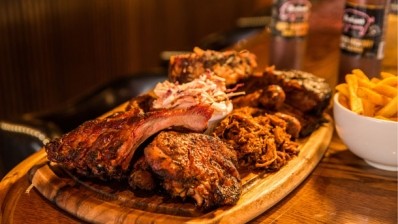Is traditional French sauce making set for a comeback?
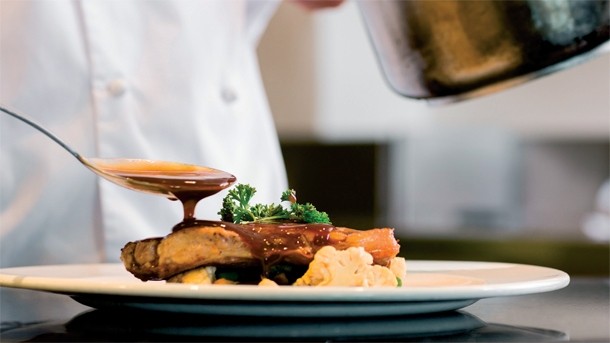
Larousse Gastronomique has within it a recipe for sauce Espagnole that calls for a cushion of veal (the part of the leg to which the udder adheres), Bayonne ham and two whole partridges. The method is frighteningly complex, involving a roux, multiple other stocks, lots of skimming and straining, and a stage during which the liquid must be reduced to the point it can be rolled into a ball between thumb and forefinger.
As Henry Harris points out, it would also cost the best part of £100 to make and yield just a litre or so. The former chef-patron of one of London’s most sorely missed French restaurants – Racine in West London – wouldn’t go to quite these lengths to produce a base for his sauces, but he is an advocate of traditional sauce making.
“At the risk of sounding like an old codger, it’s part of the craft of cookery. I have had some wonderful meals in modern restaurants but many of them don’t do proper sauces,” he says. “To my mind if you sauce a piece of meat or fish then the sauce you use needs to be linked to it. Their first meeting should not be on the plate.”
Traditionally, restaurant sauces for meat dishes are made by combining a base stock – usually veal – with the bones, offcuts and sometimes the roasting or pan juices of whichever protein is to be sauced. Often the resulting liquid would then be reduced further to increase its thickness and intensity and many kitchens would also add a roux for even more body.
But cries of “monter au beurre!” – the instruction to enrich a sufficiently reduced sauce with handfuls of diced, chilled butter – no longer echo round great kitchens. The past few decades have seen a move away from traditionally made sauces that deliver concentrated flavour and a stickiness from the gelatine in the bones.
There are a number of reasons behind this. The most obvious is a trend for lighter cooking that perhaps reached its zenith at the beginning of this decade when Noma became the world’s most influential place to eat.
The Copenhagen restaurant’s compartmentalised, naturalistic approach to cookery changed the way most ambitious chefs cooked and – in time – this has filtered down to less top-end restaurants. Sticky jus became swipes and dashes of whizzed up herb purées and if a dish had a meat-based sauce at all, it would more likely be unthickened roasting juices than a glossy, reduced number.
The scratch vs batch debate
There are also more practical factors to consider. Many restaurants are moving away from the traditional three-course meal structure, either encouraging diners to order lots of different items or offering tasting menus, and are therefore turning to lighter jus and sauces, which are more likely to be based on chicken stocks.
Rising ingredient and energy costs are making slow-cooking, gelatinous veal stocks – the preferred base for most sauces in the classical French repertoire – costly. Kitchens are also shrinking in the face of rocketing rents, meaning there is less space on the stove for simmering stock pots and slowly reducing sauces.
While he is hardly an impartial voice in the scratch-made versus ready-made debate, Nestlé CHEF consultant Andrej Prokes is right to point out that buying even the most premium ready-made stocks is less expensive than making them in-house once ingredients, labour and energy costs have been factored in.
He also argues that ready-made offers better consistency than most kitchens can achieve and that the new generation of products are comparable to house-made stocks.
“We make stocks pretty much exactly as a chef would in their own kitchens only on a larger scale,” he says. “Chefs are starting to see quality ready-made stocks in the same way they view products such as ready-made puff pastry – it’s usually impractical to make it in-house and bought in is just as good.”
Classical French strikes back
Modern equipment is also changing the way chefs approach sauce making. “Part of the problem is that a lot of modern cooking techniques don’t yield what you need to make a proper sauce,” Harris explains. “If you cook a piece of protein in a water bath and then colour it in a pan, you’re not left with much to work with. In contrast, a skilfully roasted chicken will give you a lot of material with which you can make a great sauce or gravy.”
While kitchen porters will be relieved to hear that the industry is unlikely to see a return to the days when sauces were so thick they needed to be chiselled off plates, traditional sauces are making a comeback as old-school French cooking enjoys a bit of a moment.
Now under the auspices of French chef Claude Bosi, the newly reopened Bibendum in Kensington is focused on à la carte and does not shy away from classic French flavours that would make Pierre Larousse proud (its tripe and cuttlefish gratin being a case in point).
There’s also The Game Bird at The Stafford Hotel in St James’s, where head chef James Durrant revels in heavier, glossy sauces. Côte de Boeuf is served with a Bordelaise sauce, which is made by combining a demi-glace (usually made using a rich veal stock and the previously mentioned sauce Espagnole) with dry red wine, bone marrow, shallots and butter. Just down the road from The Stafford, Simpson’s in the Strand will also reopen this month with an unashamedly traditionalist menu.
“We’re seeing a return to more classic techniques and with that more classic meat dishes,” says Prokes. “Go to a restaurant such as Jason Atherton’s City Social and there are a lot of hearty French classics. The team there has lightened them up a bit and made the plating a bit more contemporary, but the heart and soul of the dish is the same. One thing that I don’t think we’re likely to return to is large quantities of sauce on the plate. Back in the old days it was 40ml per dish, now it’s considerably less than that.”
This year’s Michelin Guide also saw fit to bestow stars on two kitchens with old-school French leanings that are striving to keep traditional French sauce-making technique alive. The first is London’s The Ritz, run by toque-sporting chef John Williams and a huge brigade of chefs, and the second is Berkshire’s The Crown, run by chef Simon Bonwick and...well that’s about it actually.
Despite being a self-declared “soloist”, Bonwick does not cut any corners when it comes to making his stocks and sauces. One day a month is devoted to making two large batches of veal stock – one light and one dark – which are then portioned up and frozen.
“Since I’m on my own in here anything else would be impractical,” says Bonwick. “These two gelatinous stocks are great vehicles for other flavours. I am aware that some chefs have swapped veal stocks for lighter chicken stocks. I have no problem with that because it can yield great results. But it’s important to me that these traditions do not fade away.”
Hitting the bottle
One aspect of traditional sauce making that Bonwick has moved away from, however, is the addition of roux. “Rather contradictory to my dedication to the old ways, roux doesn’t really have a place in my style aside from soups,” he says. “If it’s a rainy day I might add one to a stock for a braise but if I looked out my window and saw that it was sunny day, I’d leave it.”
But when it comes to wine, Bonwick goes all in. He doesn’t subscribe to the idea that a kitchen can get away with an inferior bottle if it is to be heavily reduced. “I take a really good wine, reduce it, then add another bottle and reduce that as well. I remember some years ago a high-profile chef announced they would no longer cook with wine. I tried that for a week and I missed it terribly,” says Bonwick, who recently filed a recipe with this magazine that needed to be checked then checked again, such was the volume of wine called of.
The dish in question is the defiantly classical boeuf à la ficelle, or as The Crown’s menu has it, beef fillet steamed on string with wine. The sauce is made with veal stock, with added pigs’ trotters for extra stickiness, and a brown beef stock that Bonwick makes using heavily browned beef cheeks. The stocks are reduced with pre-reduced wine to a spoon-coating viscosity and finished with butter.
Does he worry about the cost? A little. “You do it for cuisine,” he says. “I have made a financial decision to be generous. You do get efficiencies from doing this sort of thing day in, day out. For example, I steam my beef over the stock and use that for the sauce the next day. It’s about £3 a serving. Sometimes people ask me for extra sauce. It’s a compliment, but I also think ‘bloody hell’.”
